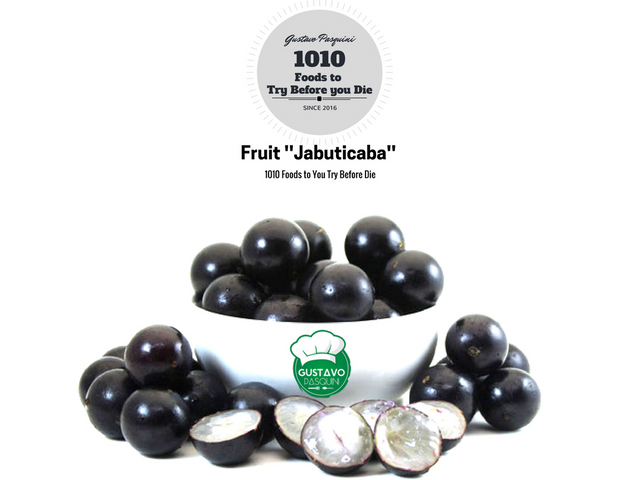1010 Food’s to delight your palate Jabuticaba #01 By Chef Gustavo Pasquini

I am here to bring 1010 Type’s of Food’s to Try Before You Die, the Food’s will be from all the world at my Gastronomic Journey on the Cruise Ship and from my country. The 02º Food will be a Fruit called “Jabuticaba” from Brazil and you can find just on December and January’s.
Jabuticaba are one of my favorite fruit but normally you get just in January’s so that one time per year you can taste this exotic fruit, we can find just in Brazil.
You can make many types of recipes with Jabuticaba like: Cakes, Gele, Juice, Ice Cream, etc…
Exotic Tree

Jabuticaba Plinia cauliflora (syn. Myrciaria cauliflora), em Nova Odessa – SP, Brasil.
The tree is a slow-growing evergreen that can reach a height of 15 meters if not pruned. It has salmon-colored leaves when they are young, which turn green as they mature. The tree prefers moist, rich, lightly acidic soil. It is widely adaptable, however, and grows satisfactorily even on alkaline beach-sand type soils, so long as they are tended and irrigated. Its flowers are white and grow directly from its trunk in a cauliflorous habit. In an uncultivated state, the tree may flower and fruit only once or twice a year, but when continuously irrigated it flowers frequently, and fresh fruit can be available year round in tropical regions.

Exotic Fruit
The fruit is a thick-skinned berry and typically measures 3–4 cm in diameter. The fruit resembles that of a slip-skin grape. It has a thick, purple, astringent skin that encases a sweet, white or rosy pink gelatinous flesh. Embedded within the flesh are one to four large seeds, which vary in shape depending on the species.[3] Common in Brazilian markets, jabuticabas are largely eaten fresh; their popularity has been likened to that of grapes in the United States.
Fresh fruit may begin to ferment 3 to 4 days after harvest, so they are often used to make jams, tarts, strong wines, and liqueurs. Due to the extremely
cultivation. Traditionally, an astringent decoction of the sun-dried skins has been used as a treatment for hemoptysis, asthma, diarrhoea, and gargled for chronic inflammation of the tonsils.
Several potent antioxidant and anti-inflammatory anti-cancer compounds have been isolated from the fruit.[4] One that is unique to the fruit is jaboticaba.
In Brazil the fruit of several related species, namely Myrciaria tenella and M. trunciflora, share the same common name. While all jabuticaba species are subtropical and can tolerate mild, brief frosts, some species may be marginally more cold-tolerant. Commercial cultivation of the fruit in the Northern Hemisphere is more restricted by extremely slow growth and the short shelf-life of fruit than by temperature requirements.
Grafted plants may bear fruit in 5 years; seed grown trees may take 10 to 20 years to bear fruit, though their slow growth and small size when immature make them popular as bonsai or container ornamental plants in temperate regions. Jabuticabas are fairly adaptable to various kinds of growing conditions, tolerating sand or rich topsoil. They are intolerant of salty soils or salt spray.
They are tolerant of mild drought, though fruit production may be reduced, and irrigation will be required in extended or severe droughts.

https://gustavopasquini.wordpress.com/2016/12/21/1010-foods-to-try-before-you-die-jabuticaba-02/
Hi, @gustavopasquini,
Thank you for your contribution to the Steem ecosystem.
Your post was picked for curation by @casagrande.
Please consider voting for our witness, setting us as a proxy,
or delegate to @ecosynthesizer to earn 100% of the curation rewards!
3000SP | 4000SP | 5000SP | 10000SP | 100000SP
Thanks